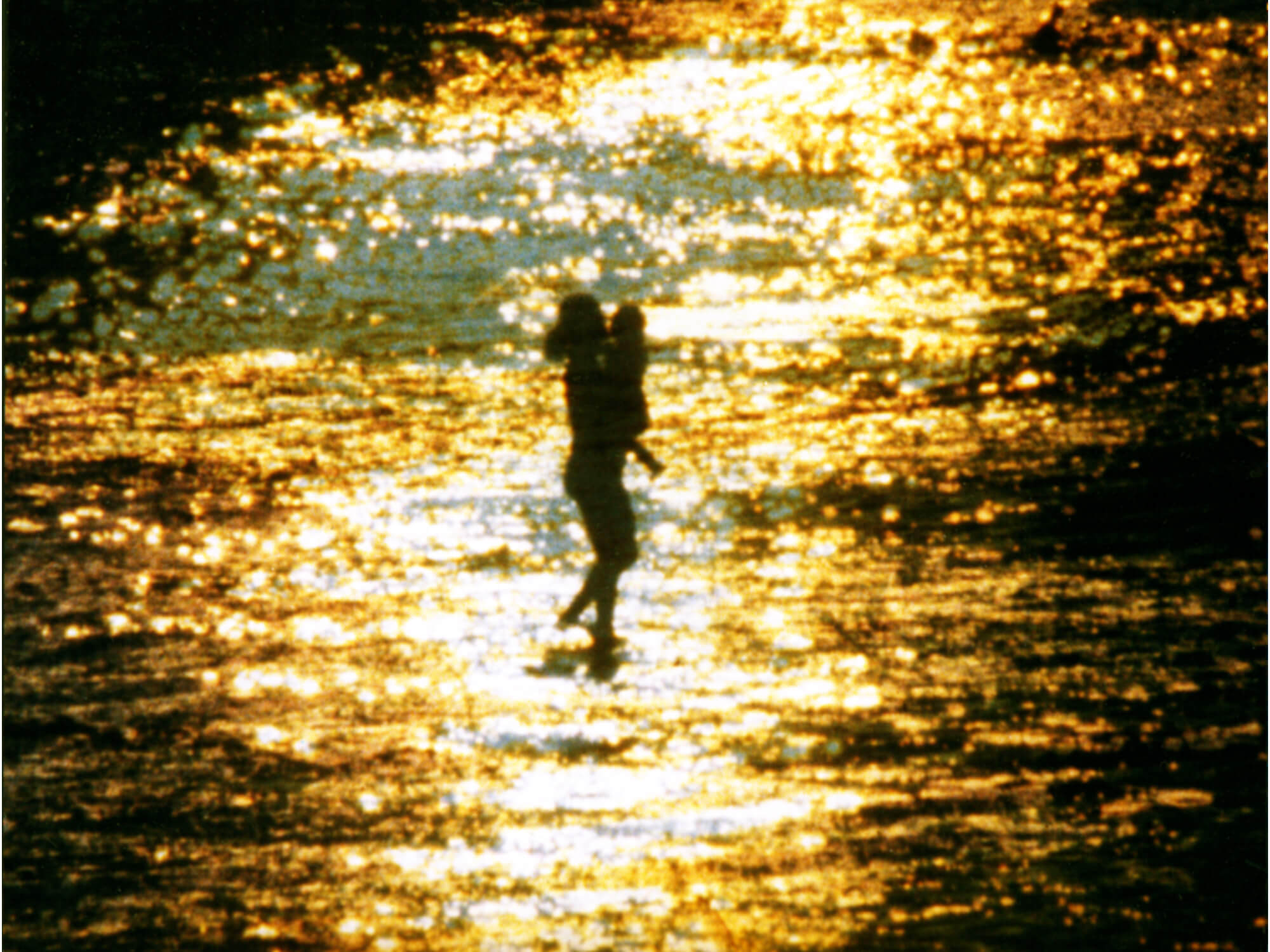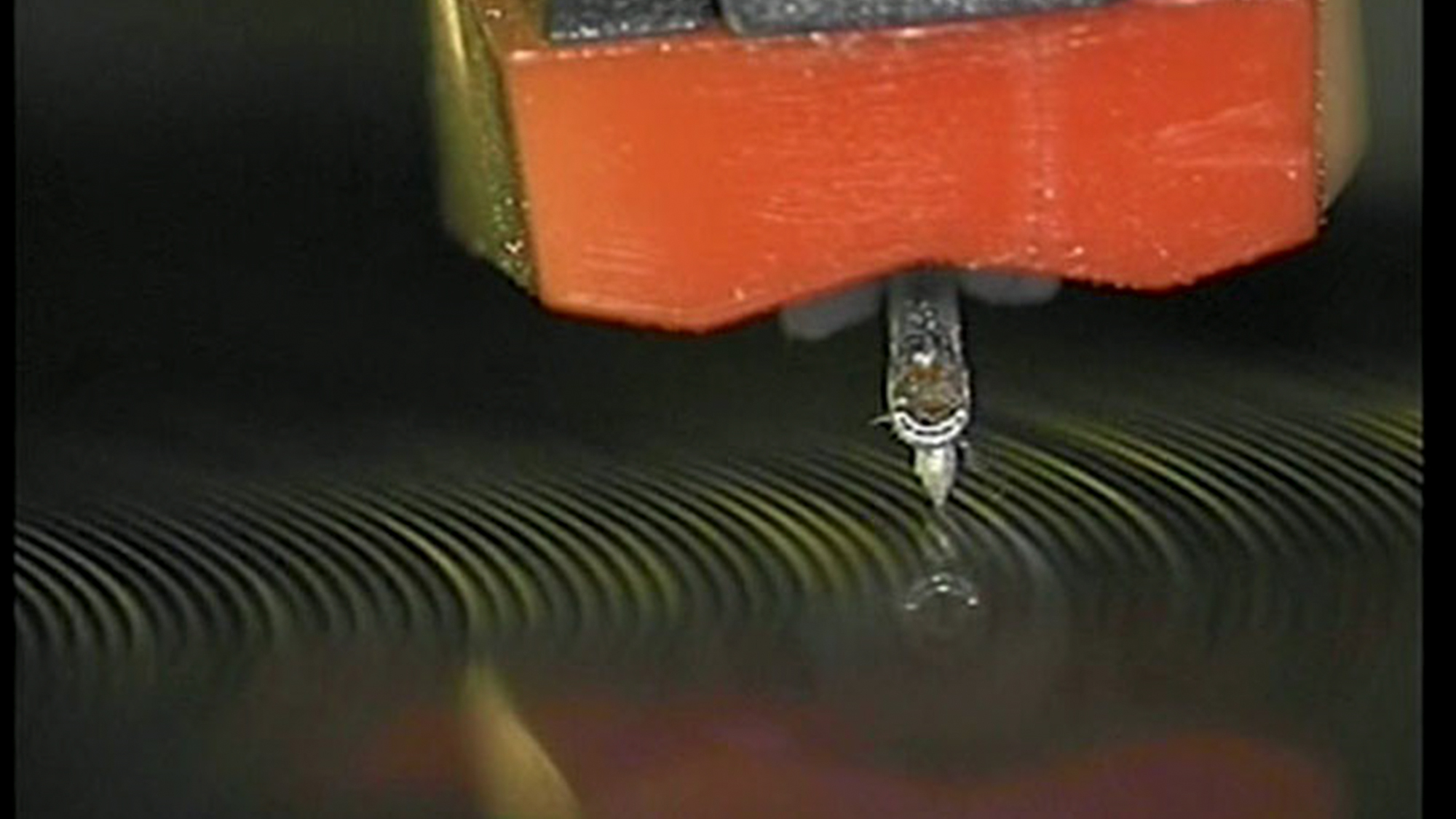
Film / video package 7
Patrick Bokanowski and Robert Cahen: crossed essays
La Centrale, from Wednesday, October 15 to Sunday, October 19, 2025 / 1:00-6:00 PM
For three months, a program of films and videos offers a journey through half a century of moving images, exploring some of the possible articulations between sound, music and image. Through a series of thematic "bouquets" or ones centered on a particular filmmaker or video artist, the program presents the work of emblematic or little-known artists, video art pioneers or film thurifers.
In a dialogue between projected works (room 1) and works on cathode-ray monitors (room 2), between formal, ethnographic and political approaches to sound, the program highlights the uses and practices of the musician's portrait, performance and soundscapes.
Each week, the films and videos disseminate discreet touches, apparitions and motifs, connections between bouquets and nods to the Biennial program: Paganini, a Sony Walkman, Jean-Luc Godard revisited by John Zorn, salt deserts, the Bachmann / Ceresole couple, brass bands and more.
A proposal by Maxime Guitton.
Hall 1
Patrick Bokanowski, The Beach
1991, 14', 35 mm digital film, color, sound
Light Cone
For the first time, Patrick Bokanowski films on location, on a beach, at the bottom of a cliff. The dark silhouettes of holidaymakers of all ages, a dog jumping on the waves, evolve in unnatural colors. We're out of time, in the company of archetypes, like Lascaux figures. The film also uses distortion to create surprising wind-surfing images, and ends with golden effects.
Patrick Bokanowski
Born in 1943 (DZ)
Based in Paris
Patrick Bokanowski is developing his work between different cinematographic genres: short film, experimental cinema and animation. His treatment of filmic material places his research at the frontier of the optical and plastic arts. His films contradict photographic "objectivity". His experiments use transparencies, mirrors and warped lenses (which he prefers to call "subjective"). They bear witness to purely mental visions that affect reality and offer new perceptive adventures. The music for his films was created by his wife, composer Michèle Bokanowski.
Room 2
Robert Cahen, L'invitation au voyage
1973, 9'27'', video, color, sound
Collection du Fonds d'art contemporain de la Ville de Genève (FMAC)
The video is based on a combination of souvenir images, accompanied by a poetic text by Joseph Attié. "Today, I see L'invitation au voyage as the work of a young author. A young author discovering a new language to which he applies his own poetics. I put in all the things that moved me. I chose photos, of people I love, from a trip to Italy that was very important to me, and I colorized them using a colorizer [the universal colorizer from ORTF's Research Department]. I put in a part of my existence, of my history, and tried to make something of it, my first attempt", declared Robert Cahen in 1998.
Robert Cahen, The second day
1988, 8', video, color, sound
Collection du Fonds d'art contemporain de la Ville de Genève (FMAC)
Illustration of John Zorn's music with a bias towards associations/dissociations. The discontinuous rhythm of the music drives the film's montage in a succession of rapid shots. This short film, built around a single character, a woman crossing New York City, filmed in an astonishing way, speaks of a world of contrasts and passages.
Robert Cahen, Boulez Répons
1985, 43', video, color, sound
Collection du Fonds d'art contemporain de la Ville de Genève (FMAC)
Robert Cahen transmits Pierre Boulez's Répons, for six soloists, instrumental ensemble and electro-acoustic device, on video. "When a listener-creator captures, prolongs, re-engages and recomposes, then concretizes in images the bursts and waves, it gives Boulez-Répons, a beautiful film," wrote Michel Chion. Pierre Boulez, who conducts the Ensemble Intercontemporain, is shown in a clear halo, in an exact relationship between music and image, while with the musicians, and the orchestra as a whole, Robert Cahen forgets about synchronism, uses slow-motion and mirror effects, and mixes images of shimmering water and waves with images of the performance, where at one point he makes a dancer run madly.
Robert Cahen
Born 1945 (FR)
Based in Mulhouse
After studying musique concrète composition at ORTF's Service de la Recherche (with Michel Chion, among others), Robert Cahen graduated from the CNSM de Paris (Pierre Schaeffer class) in 1971, becoming a composer with ORTF's Groupe de recherches musicales (GRM). He turned to video in 1970, applying the technical and linguistic experiments of musique concrète. His poetic universe is recognizable by the way he treats slow motion, exploring sound in relation to image. He multiplies the effects of sliding, alteration of movement, contraction and dilation of time - exploring the metaphor of passage, the memory of images that come and go.






